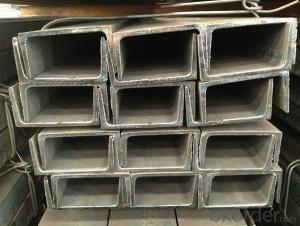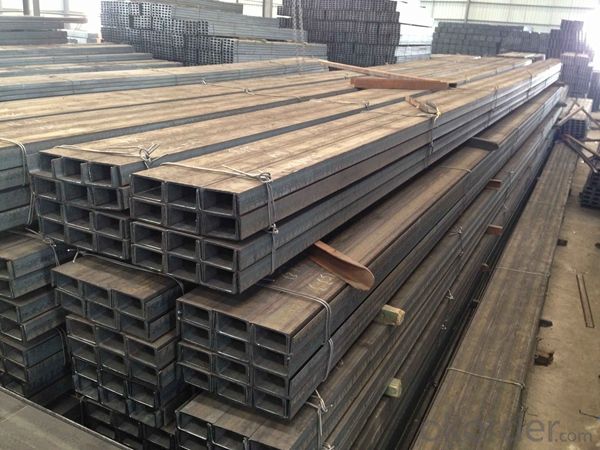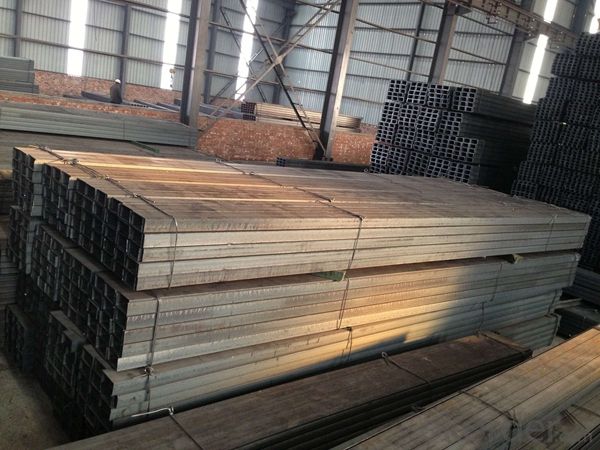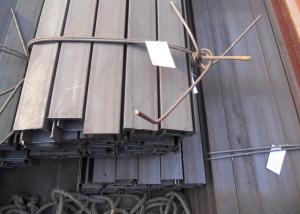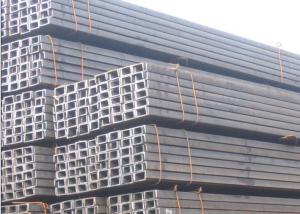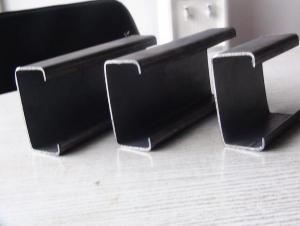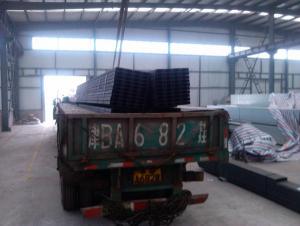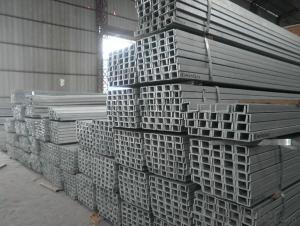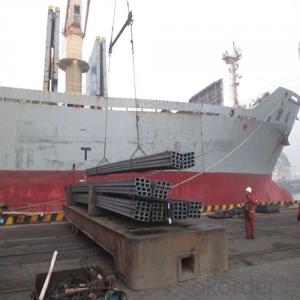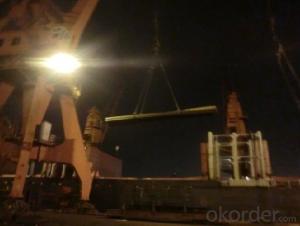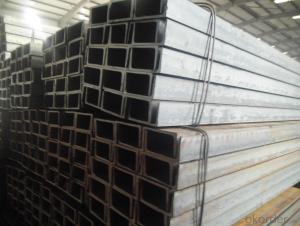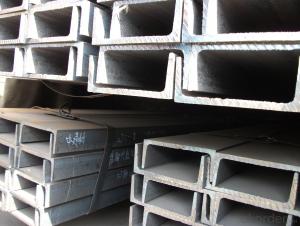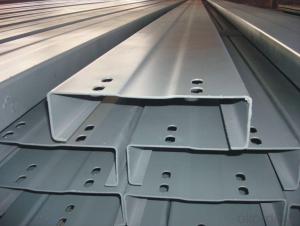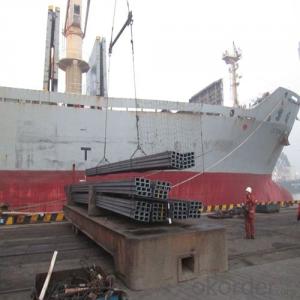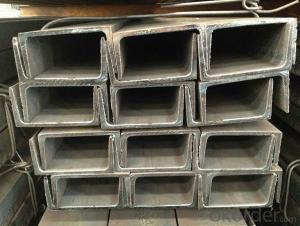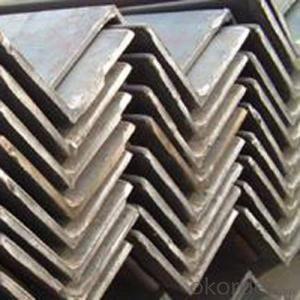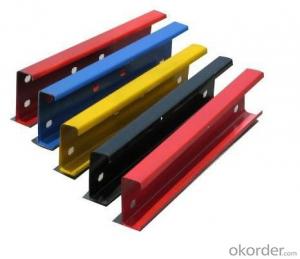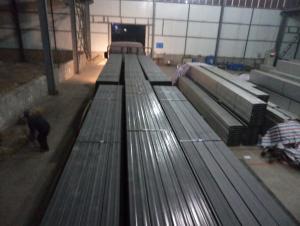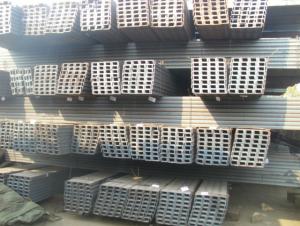Hot Rolled Steel U Channels of JIS Standard for Structures
- Loading Port:
- Guangzhou
- Payment Terms:
- TT OR LC
- Min Order Qty:
- 25 m.t.
- Supply Capability:
- 200000 m.t./month
OKorder Service Pledge
OKorder Financial Service
You Might Also Like
Product Description:
OKorder is offering Hot Rolled Steel U Channels of JIS Standard for Structures at great prices with worldwide shipping. Our supplier is a world-class manufacturer of steel, with our products utilized the world over. OKorder annually supplies products to European, North American and Asian markets. We provide quotations within 24 hours of receiving an inquiry and guarantee competitive prices.
Product Applications:
Hot Rolled Steel U Channels of JIS Standard for Structures are ideal for structural applications and general fabricating. The steel u channel can be applied to construction of warehouses, workshops, sport stadiums and car parks etc. In details, the steel u channel belongs to carbon structural steel which is applied to in the field of construction and machinery. The steel u channel is usually used for arch-itechtural structure, and they could be welded in order to support or hang a vari-ety of facilities. They are also usually used in combination with I beam. Generally,the steel u channel must possess perfect welding property, riveting property and mechanical property and so on.
Product Advantages:
Hot Rolled Steel U Channels of JIS Standard for Structures are durable, strong, and resists corrosion. And the tensile strength and yield point can satisfy the requirements of customers.
Main Product Features:
· Premium quality
· Prompt delivery & seaworthy packing (7-10 days after receiving deposit)
· Corrosion resistance
· Can be recycled and reused
· Mill test certification
· Professional Service
· Competitive pricing
Product Specifications:
Hot Rolled Steel U Channels of JIS Standard for Structures Details:
Minimum Order Quantity: 25 Tons Unit: m.t. Loading Port: Xingang Port
Supply Ability: 1000 Tons Per Day Payment Terms: TT or L/C
Product Description:
Specifications of Steel U Channel:
Standard Applied: GB Standard, EN Standard(UPN), JIS Standard
Sizes: 50mm to 300mm
Material Grade: Q235B, Q345B, S235JR, SS400, ASTM A36
As shown in the figure:
| JIS U CHANNEL | Standard h | Sectional b | Dimension s | t | Mass: Kg/m |
| (mm) | (mm) | (mm) | (mm) | ||
| 50x25 | 50 | 25 | 3.0 | 6.00 | 2.37 |
| 75X40 | 75 | 40 | 3.8 | 7.00 | 5.30 |
| 75X40 | 75 | 40 | 4.0 | 7.00 | 5.60 |
| 75X40 | 75 | 40 | 4.5 | 7.00 | 5.85 |
| 75X40 | 75 | 40 | 5.0 | 7.00 | 6.92 |
| 100X50 | 100 | 50 | 3.8 | 6.00 | 7.30 |
| 100X50 | 100 | 50 | 4.2 | 6.00 | 8.03 |
| 100X50 | 100 | 50 | 4.5 | 7.50 | 8.97 |
| 100X50 | 100 | 50 | 5.0 | 7.50 | 9.36 |
| 125X65 | 125 | 65 | 5.2 | 6.80 | 11.66 |
| 125X65 | 125 | 65 | 5.3 | 6.80 | 12.17 |
| 125X65 | 125 | 65 | 5.5 | 8.00 | 12.91 |
| 125X65 | 125 | 65 | 6.0 | 8.00 | 13.40 |
| 150x75 | 150 | 75 | 5.5 | 7.30 | 14.66 |
| 150x75 | 150 | 75 | 5.7 | 10.00 | 16.71 |
| 150x75 | 150 | 75 | 6.0 | 10.00 | 17.90 |
| 150x75 | 150 | 75 | 6.5 | 10.00 | 18.60 |
FAQ:
Q1: Why buy Hot Rolled Steel U Channels of JIS Standard for Structures from OKorder.com?
A1: All products offered byOKorder.com are carefully selected from China's most reliable manufacturing enterprises. Through its ISO certifications, OKorder.com adheres to the highest standards and a commitment to supply chain safety and customer satisfaction.
Q2: How do we guarantee the quality of Hot Rolled Steel U Channels of JIS Standard for Structures?
A2: We have established an advanced quality management system which conducts strict quality tests at every step, from raw materials to the final product. At the same time, we provide extensive follow-up service assurances as required.
Q3: Can Hot Rolled Steel U Channels of JIS Standard for Structures rust?
A3: If all the goods are newly produced, there will be no rust.
Images:
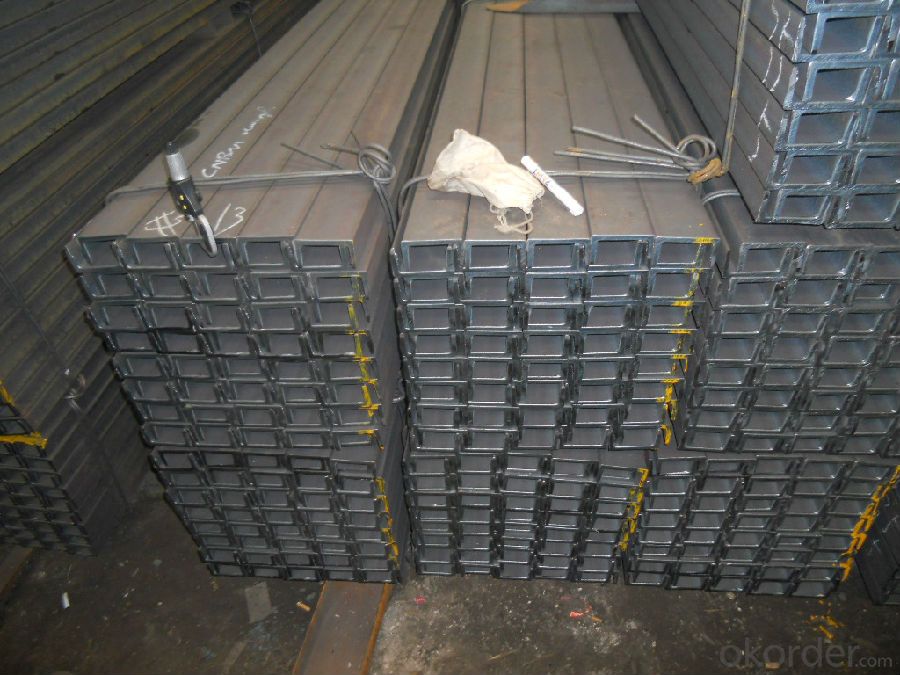
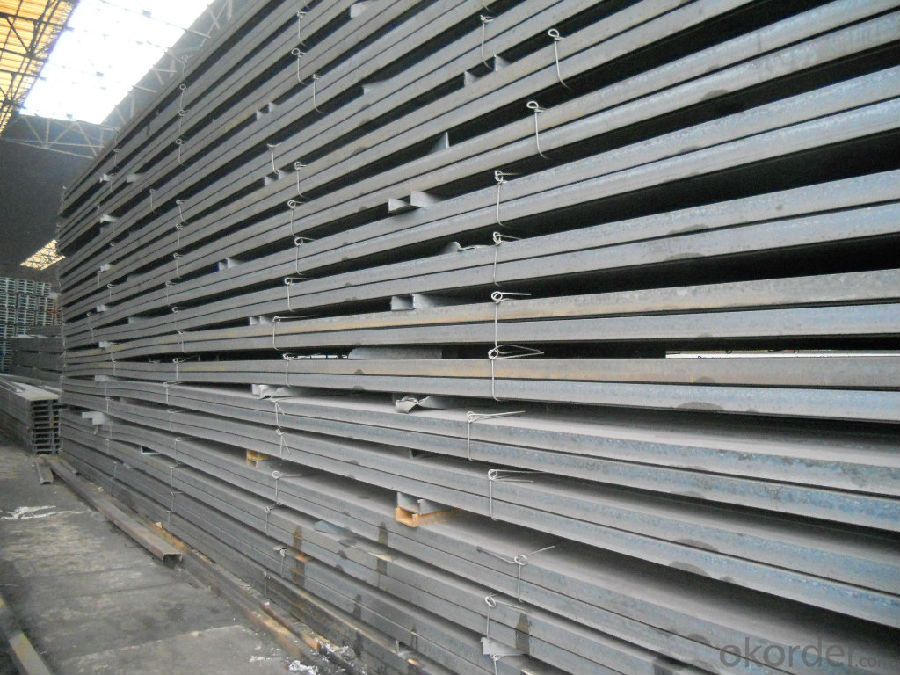
- Q: The above four should be all types of steel, but what is the relationship between H steel and I-beam, C section steel and channel steel?Is the I-beam included in the H section, or is it all the same?
- The shape of H steel on the lower flange far wider than I-beam
- Q: Can steel channels be customized to specific lengths?
- Indeed, it is possible to customize steel channels to meet specific length requirements. Although steel channels are typically found in standard sizes, they can be altered or trimmed to match the desired length. This customization process entails cutting the steel channel to the desired length and may also involve implementing welding or other techniques to uphold its structural integrity. The ability to customize steel channels offers enhanced flexibility in a variety of construction and engineering applications.
- Q: What type of channel steel and I-beam should be used to build an attic floor? Thank you!
- 4.5 meters wide, certainly not wooden side. If you use wood, you will regret it in the future. 4.5 meters wide with wooden square, unless there is an upright post in the middle, otherwise it will surely fall. This is not a ceiling. If you use wood, you can only use more than 20 cm of raw wood through. I used to do an attic, the width of the room is 3.6 meters, all of the diameter of about 20 of the original wood, and later used basically do not shake, you can have this room nearly 1 meters wide oh.
- Q: I think the channel model specifies the standard of cross section, and -39 refers to the length of the channel. Thank you for your answer.
- That is to say, 10# channel steel, size is 100 wide, leg height 48, thickness 5
- Q: Can steel channels be used in water treatment plants?
- Yes, steel channels can be used in water treatment plants. Steel channels are commonly used in water treatment plants for various applications such as supporting infrastructure, conveying and directing water flow, and providing structural stability. The corrosion resistance and durability of steel make it a suitable material for handling water treatment processes effectively.
- Q: What are the fire resistance properties of steel channels?
- Steel channels have excellent fire resistance properties due to the inherent characteristics of steel. Steel has a high melting point, which means it can withstand high temperatures without losing its structural integrity. Additionally, steel channels do not contribute to the spread of fire as they are non-combustible. This makes steel channels a reliable choice for applications where fire resistance is a priority, such as in building construction and fire-rated assemblies.
- Q: Can steel channels be used for mezzanine office spaces?
- Yes, steel channels can be used for mezzanine office spaces. Steel channels provide strong support and structural stability, making them suitable for constructing elevated floors in mezzanine office spaces. They can effectively bear the weight of office furniture, equipment, and occupants, ensuring a safe and durable structure.
- Q: Are steel channels suitable for use in conveyor systems?
- Yes, steel channels are commonly used in conveyor systems due to their strength, durability, and versatility. They provide excellent support for heavy loads and can withstand the rigors of continuous operation, making them suitable for use in conveyor systems.
- Q: Can steel channels be used for window framing?
- Yes, steel channels can be used for window framing. Steel channels are commonly used in construction for their strength, durability, and ability to support heavy loads. They provide a solid framework for windows, ensuring stability and longevity.
- Q: Can steel channels be used for noise reduction purposes?
- Steel channels, also referred to as acoustic metal channels, have the ability to serve noise reduction purposes. These channels are commonly utilized as part of soundproofing systems in buildings and structures. Their primary function is to absorb and dampen noise vibrations, thereby minimizing sound transmission. In terms of composition, steel channels are crafted from top-notch steel and possess unique dimensions and shapes that enhance their acoustic properties. Installations of these channels typically occur between walls, floors, or ceilings, creating a barrier that effectively blocks sound passage. The effectiveness of steel channels in noise reduction is contingent upon several factors, including the channel's thickness and material, the noise type and frequency, and the overall soundproofing setup employed. When properly installed in conjunction with other soundproofing materials like insulation, acoustic panels, or mass-loaded vinyl, the utilization of steel channels can significantly diminish the ingress or egress of noise within a space. It is worth mentioning, however, that although steel channels can be efficacious in reducing noise, they may not completely eradicate all sounds. Certain low-frequency or high-intensity noises may still penetrate the soundproofing system. Consequently, it is imperative to seek guidance from professionals or acoustic engineers to identify the most suitable soundproofing solutions based on specific requirements and noise levels.
Send your message to us
Hot Rolled Steel U Channels of JIS Standard for Structures
- Loading Port:
- Guangzhou
- Payment Terms:
- TT OR LC
- Min Order Qty:
- 25 m.t.
- Supply Capability:
- 200000 m.t./month
OKorder Service Pledge
OKorder Financial Service
Similar products
Hot products
Hot Searches
Related keywords
